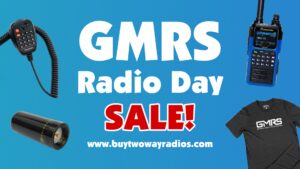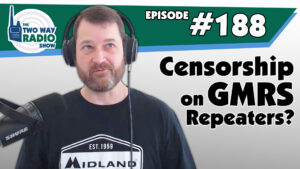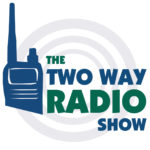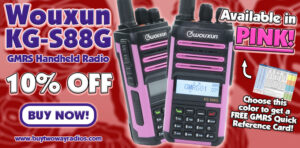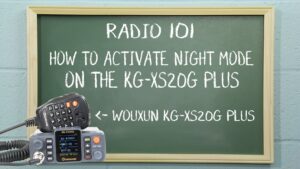- Home
- Business Radios
- Consumer Radios
- Accessories
- Antennas
- Antenna Analyzers
- Audio Accessories
- Batteries
- Belt Clips
- Bundles and Kits
- Cases and Holsters
- Chargers
- Coaxial Cable
- DC Power Accessories
- DC Power Supplies
- Dummy Loads
- Duplexers
- Faraday Bags
- Miscellaneous Accessories
- Mounts
- Power SWR Meters
- Programming Cables and Software
- Replacement Parts
- Solar
- Test Equipment
- By Radio Type
- By Radio Brand
- Services
- Other Products
- Buyer's Guide
- Resources
Compare (0)
You have no items to compare.
Same Day Shipping! Orders placed before 5 p.m. EST ship same day!
GMRS
General Mobile Radio Service (GMRS) Radios
-
Our National GMRS Radio Day Sale is back for 2024 - 35 Hours Only!
NOTE: This promotion expired April 20, 2024 and is no longer available.
It's back for 2024, and only for 35 hours! Celebrate National GMRS Radio Day with specials on GMRS two way radios and accessories at Buy Two Way Radios with Promo Code: GMRS35!!The GMRS Day Sale begins at 1 PM EDT Friday, April 19, 2024 and ends at midnight EDT Saturday April 20, 2024.
- Get $20 off a Wouxun KG-XS20G Plus Mobile GMRS radio (no promo code needed for this one- discount automatically added in cart)!
- 10% off Wouxun GMRS accessories!
- 10% off Melowave Overlander and Shadow Mobile GMRS antennas!
- Get 10% off all XLT audio accessories!
- Plus get 10% off a Superhet Apparel GMRS T-shirt!
- FREE FRS/GMRS Radio Reference Card with purchase of any Wouxun GMRS radio (no promo code needed - item automatically added in cart)!!
What is National GMRS Radio Day?
On April 19th 2022, the FCC officially lowered the GMRS license application fee from a ridiculous $70 to the current and much saner $35. This was certainly a cause for celebration, and since that day, tens of thousands of radio enthusiasts rushed to the FCC website to become newly licensed GMRS operators.That same year, Buy Two Way Radios celebrated the new, lower GMRS license fee by declaring April 19 National GMRS Radio Day! We established this as an annual event to celebrate the new accessibility of the GMRS to the American public.
Why is the sale only 35 hours?
It represents the $35 cost of the license fee, which caused the sudden surge in GMRS license applications. It is estimated that during the first 35 hours after the introduction of the new fee in April 2022, the number of GMRS licenses granted by the FCC more than quadrupled over the same two day period in the previous year. For the entire week of April 19, 2021 there were 900 license grants. There were 3,875 in that same period in 2022. That's quite a surge.Celebrate GMRS Radio Day 2024 with Promo Code GMRS35 at Buy Two Way Radios!
-
Censorship on GMRS Repeaters? | TWRS-188 Podcast Video
How much power does a GMRS repeater owner have to control free speech? In an area where one GMRS repeater dominates others on a channel, does that repeater owner have the final word as to what can and can't be said on the air? Is it time for the FCC to update the rules for GMRS?
In this full video edition of the award nominated The Two Way Radio Show Podcast, we discuss the question of how much control a GMRS repeater operator can have over the use of their private repeater on a GMRS repeater channel. We’ll also take some of your comments and questions from our blog and our Two Way Radio Forum.
Listen to the audio only version of this episode and Subscribe to the show!
Want more videos about 2-way radios? Browse our video blog and subscribe to our YouTube channel and Rumble channel!
-
Is ham radio better than GMRS?
 Recently someone in our forum introduced a discussion comparing the amateur radio service to the GMRS, and provided a short but interesting take as to why he thought ham radio was the better option. The reasoning put forth was based simply on the concept that while both were governed by rules set forth by the FCC, ham radio had more spectrum allocated to it than GMRS. While it is true that GMRS is limited to only 22 simplex and 8 repeater channels, to say that ham radio is better then GMRS isn't an accurate or fair comparison at all, and here's why.
Recently someone in our forum introduced a discussion comparing the amateur radio service to the GMRS, and provided a short but interesting take as to why he thought ham radio was the better option. The reasoning put forth was based simply on the concept that while both were governed by rules set forth by the FCC, ham radio had more spectrum allocated to it than GMRS. While it is true that GMRS is limited to only 22 simplex and 8 repeater channels, to say that ham radio is better then GMRS isn't an accurate or fair comparison at all, and here's why.Both services are governed and regulated by the FCC
One observation that was brought up in the conversation was that fact that both services were established by the Federal Communications Commission and are governed according to the rules set forth in Title 47 of the United States Code of Federal Regulations (CFR). The GMRS is regulated under Part 95(E) and Amateur (ham) radio under Part 97 Subchapter D of the rules, respectively. Both of these services have rules of operation, so no difference there.Both services require a license to transmit
Another similarity between ham and GMRS is the requirement to purchase a license to operate on each service. Each license is issued a call sign, which the operator must use for identification when transmitting on the air. As of April 19, 2022 a license for either service costs $35 and is valid for ten years. There are no differences there, either. That's where the similarities end.The licenses are different
Although both ham and GMRS operators require a license, there are important differences in the way each license is acquired, and with good reason. The GMRS is a fairly simple service to use, requiring little to no actual technical knowledge for basic operation. Most of the GMRS radios available are pre-programmed out of the box or "plug-n-play", meaning that you don't really have to configure the radio on your own to get it to work.Sure, it can get technical if you are treating it as a hobby and really want to get into the nuts and bolts of antennas, feed lines and such. But the GMRS was actually intended as a utility radio service that pretty much anyone could access and use for general purposes, and it still is. Because of this, getting a GMRS license requires nothing more than filling out a form, plunking down the fee, buying an FCC approved GMRS radio, and that's about it.
Ham radio, on the other hand, is the polar opposite. Unlike GMRS, which operates only on the UHF band and a very limited number of frequencies that are, like CB radio, hard set by the FCC to pre-assigned channels, ham radio covers multiple bands across a wide area of the radio spectrum, including HF, VHF and UHF. The FCC gives Amateur radio operators a lot of latitude for operation. For instance, hams can build their own of equipment and experiment over the amateur airwaves to develop methods and technologies intended to further enhance the quality of life. The FCC recognizes ham radio as a bona fide hobby service, and it is one.
The whole experimentation part is a lot of power to place in the hands of anyone, and can make it a highly technical and potentially dangerous hobby to pursue. For this reason, someone can't just plunk down $35 and get an Amateur license. It requires one to study the technical stuff and take a test to prove an acceptable level of competency in this area.
Also, unlike GMRS, ham radio has not one, but three license levels. These are the Technician, General and Amateur Extra. Each license level requires a higher degree of study, training and expertise than the last. Each license level also grants different levels of access to the amateur radio bands. The Technician license grants you the UHF, VHF and a couple of HF bands, the General grants some additional HF bands, and the Amateur Extra grants access to all of the amateur bands available.
There is one other important difference between an amateur license and GMRS license that's definitely worth noting. A ham license is issued to an individual, and is not transferrable. The exception is a Club license, which can be issued to a ham radio club, but it is still assigned to an individual designated as the trustee of the club, and not the club as a whole.
On the other hand, a GMRS license, while issued to an individual, is also valid for that individual's entire immediate family. This includes the license holder's spouse, children, grandchildren and various other relatives. Watch our video Radio 101 - Who is Covered by a GMRS License? for details.
The services have different freedoms and limitations
As already mentioned, ham radio operators can operate on multiple bands and frequencies, and those frequencies are not assigned to any specific, FCC mandated channel numbers. The GMRS is limited to a total of 22 assigned channels, plus 8 pre-assigned repeater channels. This limitation alone gives ham radio an edge. Ham operators can also bounce those signals around to increase coverage across hundreds or thousands of miles, giving it even greater freedom of range than GMRS.Also, there are fewer limitations for ham as far as equipment is concerned. Because hams can build their own radios, those transceivers don't need to be Part 97 type accepted for use on the ham bands. What this means is that a ham can program and use, say, a business or other radio that is capable of transmitting on ham frequencies and use it without prior authorization from the FCC to do so. In contrast, a GMRS operator is required to use a GMRS radio that is Part 95 type accepted and approved by the FCC for legal use on the service.
But GMRS also has an advantage. GMRS shares the same 22 simplex channels and frequencies assigned to the Family Radio Service, or FRS. This means that a licensed GMRS operator can communicate with a license-free FRS operator, and vice-versa. This provides some flexibility and freedom for families, groups and even businesses who are using these services for short range comms that are not available to hams, as they generally only communicate with other licensed hams.
The rules for repeaters are different
Amateur and GMRS operators have another commonality. Both can extend their range through the use of repeaters. Yet the rules for using them are a bit different for each service.Obviously ham repeaters have an advantage when it comes to the number of bands and frequencies on which a repeater can operate, as well as the options for linking these repeaters together to extend that range even further.
On the other hand, GMRS repeaters have an advantage of their own. Although limited to one band, a GMRS repeater has a bit more latitude as to who can use it and how they must identify the repeater station.
Ham repeaters are limited to individually licensed ham radio operators with valid amateur radio call signs. GMRS repeaters can be used by a licensed GMRS operator and any family member of that operator who is covered by that GMRS call sign, as allowed by the repeater owner. In addition, if a GMRS repeater is only intended for private use by that license holder and the family, it does not need to transmit an ID, since the repeater station ID is the owner's own call sign and everyone on that repeater will be giving their family call sign during normal communications.
Each service has different power limits
It's no secret that ham radio has an edge when it comes to transmit power. The FCC granted the amateurs a fair amount of latitude when it comes to wattage allowances, although with a few limitations as well. It also depends somewhat on the license class. Technicians can transmit on up to 1,500 watts PEP on most VHF and UHF bands, but are limited to 200 watts PEP on HF bands. General and Extra Class operators can transmit up to 1,500 watts PEP on most bands with a few restrictions on additional bands they can access.Conversly, GMRS operators are limited to 5 watts on channels 1-7, a half watt on channels 8-14, and up to 50 watts on channels 15-22 and the repeater channels. This doesn't seem like much compared to the limits for ham radio operators, but it doesn't need to be for this service. Considering the great responsibility that comes with great power in the hands of the average GMRS family, that's a good thing.
Each service has different restrictions on permissible speech
There is one big difference between ham and GMRS that needs to be discussed, and it is an important one, because it has to do with what you can and can't say on the air.First, let's look at the similarities. Both GMRS and ham radio have rules about keeping the speech civil, clean, and above board, so to speak, and that really should go without saying. Both services have rules against advertising and "broadcasting" transmissions or messages. Scrambled messages or those coded with hidden meanings are also against the rules, unless they are standard "10" codes (or "Q" codes in ham radio).
Now here's the difference. There was a time when GMRS licenses were also granted to businesses, and as long as the license is still maintained, it is considered a grandfathered GMRS license. Technically, a GMRS radio can still be used for commercial operations if each individual working in the company or organization has their own GMRS license. Also, license-free FRS radios can be used by businesses as well as individuals. Since GMRS and FRS share the same channels, and operators on both can communicate with one another, business related activity is allowed.
This is quite the reverse with ham radio. The FCC explicitly states that ham radio cannot be used for pecuniary interest, meaning business or commercial communications are generally not allowed. This gives GMRS a huge advantage over ham radio.
Conclusion
So, is ham radio better than GMRS? Or is it the other way around?That depends on who you talk to - literally. It also depends on what you want to do with each service. For instance, there are certainly advantages to ham radio for people who want to make contacts all over the world, but not everyone wants to do this. The GMRS allows an operator to interact with license-free users on FRS, but not everyone wants to do that either. Each service has its strengths and limitations, and everyone who uses them doesn’t need them to do the same things. Each will fit one user better than another, and everyone is different.
You wouldn’t say airband is better than marine band, or FRS is better than CB, would you? These are all different services intended for different purposes, so one isn’t really better than the other. They’re just different, as intended. Such is the same with ham radio and the GMRS.
-
TWRS-188 - Censorship on GMRS Repeaters?
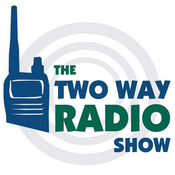
We discuss the question of how much control a GMRS repeater operator can have over the use of their private repeater on a GMRS repeater channel. We’ll also take some of your comments and questions from our blog and our forum.Intro :00
Billboard 1:09Censorship on GMRS Repeaters? 1:24
Recently I overheard an exchange on a local GMRS repeater between the owner of the repeater and a newly licensed GMRS operator who was using it. Although the new operator did not violate any of the FCC rules, he apparently did break one set by the owner of the repeater as a condition for using it. The question is, How much power does a GMRS repeater owner have to control free speech?Questions and Answers 40:00
Comments and questions from our blog and members of the Two Way Radio Forum. Check out and join the forum! It's free!Wrap up and Close 45:08
Send in your comments and questions for Danny, Anthony and Rick to show[at]buytwowayradios.com. Feedback on this and other topics will be read by the hosts and included in future episodes of the show. If we read your comment about this episode on a future episode, we may send you a free t-shirt or some swag! Visit us at www.twowayradioshow.com!© 2024 Cricket Ventures, LLC. All rights reserved.
Podcast: Play in new window | Download (Duration: 45:59 — 42.2MB) | Embed
Subscribe: Google Podcasts | Spotify | iHeartRadio | Email | TuneIn | RSS | More
-
Radio 101 - How to Add a Repeater Channel to the KG-1000G Plus
The Wouxun KG-1000G Plus GMRS mobile two way radio is pre-configured with 22 simplex and 8 GMRS repeater channels. Since it can be programmed with up to 999 total channels, you can add additional repeater channels to the radio with customized tones and codes. How do you do it?
In this episode of Radio 101, Tommy shows you how to add a repeater channel to the KG-1000G Plus directly from the radio itself.
This procedure works on the original Wouxun KG-1000G and KG-1000G Plus. -
Getting Started with GMRS
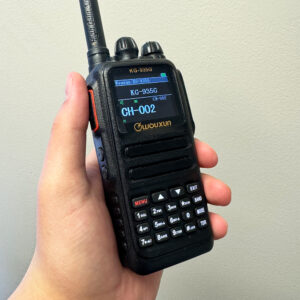 GMRS radios allow you to instantly communicate with friends and family. They are great tools for camping, hiking, offroading and other outdoor activities. They can also be used for disaster preparedness, general comms around the home and neighborhood, and much more! If you're looking for reliable short range communications for such activities, a GMRS radio is certainly worth consideration. Here's how to get started with GMRS.
GMRS radios allow you to instantly communicate with friends and family. They are great tools for camping, hiking, offroading and other outdoor activities. They can also be used for disaster preparedness, general comms around the home and neighborhood, and much more! If you're looking for reliable short range communications for such activities, a GMRS radio is certainly worth consideration. Here's how to get started with GMRS.What is GMRS?
GMRS is an acronym for General Mobile Radio Service. GMRS is available for personal use and is a popular choice among consumers and a growing number of radio hobbyists. There are 30 GMRS channels available, consisting of 22 simplex channels and eight repeater channels. The 22 simplex channels are shared with the FRS, or Family Radio Service. Channels 1-7 are limited to 5 watts of power. Channels 8-14 are low power channels with a maximum of one half of one watt, and channels 15-22 are allowed to operate at up to 50 watts. Check out the list of FRS and GMRS Frequencies available.Do I need a license for GMRS?
If you haven’t already, you will need a GMRS license. It’s easy to get, costs only $35 and is good for 10 years. No test is required. Once your license is issued, you’ll have a call sign to identify yourself to others when talking on your GMRS radio.How do I get a license?
To purchase a GMRS license, visit the FCC website at fcc.gov and complete form 605. Once you pay the license fee and receive your GMRS call sign, you’re on your way. Learn how to get a GMRS license in only four steps.Who is covered by my license?
Your GMRS license is valid for you and all members of your immediate family, regardless of age. Watch our video Radio 101 - Who is covered by a GMRS License? for more information.I have a GMRS radio and a license to use it. Now what?
Talk on your radio! You can do a lot of cool things with a GMRS radio, such as connecting with caravans on road trips, emergency communications, going on outdoor adventures, coordinating community events, and simply staying in touch with family and friends. You can even talk on a repeater to communicate across long distances!What is a repeater?
A repeater is a device that receives a radio signal and re-transmits or repeats it across a broader area, greatly increasing range. The repeater transmits the signal at a much higher wattage than a typical handheld radio, allowing for a much larger coverage area. Using repeaters, you can communicate with other GMRS users over long distances – even hundreds of miles!How do I find a repeater?
Repeaters exist across the continental US. A national directory of repeaters is located online at myGMRS.com. You will need to join myGMRS.com to access the database, but once you do, simply type in your zip code to locate repeaters within your area.How do I use a repeater?
Once a repeater is located, you will need to obtain permission to access it. Some repeaters are available to the public, while others are private. Once permission is granted, you will need the receive frequency, the transmit frequency and the CTCSS tones or DCS codes the repeater uses in order to access it.What are CTCSS and DCS?
Also known as Privacy Codes and numerous other names, CTCSS tones and DCS Codes help reduce interference by filtering out transmissions from other parties that are using the same channel or frequency. When used with repeaters, these tones and codes serve as an “access key” of sorts to allow communications by radio operators who are granted permission to use the repeater system.Some repeaters use the same CTCSS tone or DCS code for both transmit and receive, while others use a different tone or code for each, also known as split tones. Some repeaters don’t use them at all. It all depends on the repeater.
Where can I find more information?
There is huge repository of blog articles, podcasts, videos, and other resources about GMRS available at Buy Two Way Radios. Here is a List of Two Way Radio Resources to find the information you need. -
The Valentine's Day Sale on the Wouxun KG-S88G is back!
NOTE: This promotion expired February 14, 2024 and is no longer available.
Yes, it's that time of year again. Love is on the air in 2024 with our Valentine's Day Sale at Buy Two Way Radios! Buy an Wouxun KG-S88G GMRS radio and get 10% off the regular price! The KG-S88G is regularly priced at $139.99, and during this special you can get it for only $125.99!
Just like last year, the deal is even sweeter if you buy the pink one, because you'll get 10% off the KG-S88G plus a FREE FRS/GMRS Radio Quick Reference Card! You can choose any of the four colors for the 10% discount. If you choose the pink radio you get the FREE reference card too, just for you (or your significant other). Buy as many as you want, as long as we have the stock of course. You don't need a coupon code, either. The discount (and the card if you choose the pink one) will be added to your order automatically at check out.
Our Valentine's Day Sale begins February 8th 2024 and ends at midnight on Valentine's Day, February 14th, 2024.
Show your love on the airwaves this Valentine's Day with an Wouxun KG-S88G from Buy Two Way Radios!
-
Radio 101 - How to Activate Night Mode on the Wouxun KG-XS20G Plus
The Wouxun KG-XS20G Plus has a feature called Night Mode that can be activated by a programmable key. This allows you to instantly adjust the display brightness when driving in your vehicle at night.
In this episode of Radio 101, Tommy shows how to assign Night Mode to a programmable key to activate and deactivate this feature.
Want more videos? Browse our video blog and subscribe to our channel on YouTube or Rumble!
-
How to buy your first GMRS radio
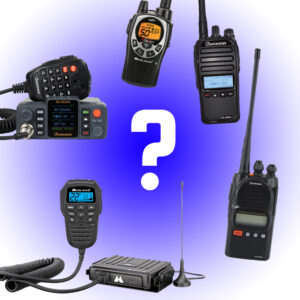 GMRS has been around for decades, yet it has only begun to enter the mainstream within the last couple of years. There are a few reasons for this, among them the Part 95 rule changes in 2017. Then in April 2022, the FCC lowered the GMRS license fee from an exorbitant $70 to a more reasonable $35. Now, as more and more people get on the air who are new to the GMRS and to the world of two way radios in general, the General Mobile Radio Service is thriving.
GMRS has been around for decades, yet it has only begun to enter the mainstream within the last couple of years. There are a few reasons for this, among them the Part 95 rule changes in 2017. Then in April 2022, the FCC lowered the GMRS license fee from an exorbitant $70 to a more reasonable $35. Now, as more and more people get on the air who are new to the GMRS and to the world of two way radios in general, the General Mobile Radio Service is thriving.We get a lot of phone calls, live chats, and comments in our blog and our Two Way Radio Forum from first time buyers of GMRS radios, and their questions run the gamut between transmission range, price point and everything in between. All of them generally come down to one question overall: Which GMRS radio is the best one to buy?
This is a loaded question, because it is somewhat subjective. Sure, some GMRS radios are better than others, but the truth is, the radio you buy will largely depend on what your needs are, what your budget is, your level of experience and the type of radio you are searching for. There are a lot of GMRS radios out there, and it seems like more are entering the market every day. With all of the choices available, it's easy to become overwhelmed. So, how do you choose the best two way radio for you? No worries, because we can help. At Buy Two Way Radios, it's what we do.
Here are some important tips to consider before you buy your first GMRS radio.
Decide how you will use it.
Are you going to buy a pair or two for general family communications, or a single radio for personal contacts with peers? Are you using it around the house or while out and about in your vehicle? Will you be simply using it for short range radio-to-radio transmissions or calling other users over long distances using a repeater?These are important considerations, because they will largely dictate how much radio you may or may not need, which will determine where you go with the other tips listed below.
Budget your purchase.
How much are you willing to spend? Whether the radios are a necessity or a pastime, most of us do not have unlimited funds available to throw at our comms. While he old adage is true that you get what you pay for, what are you getting for it, and how much of it can you afford? These are important questions, because if you don't have a plan for what you are willing to spend, you may find yourself overextending your budget without actually getting what you need. Not only will this hurt your wallet, it will likely lead to buyer's remorse which may ultimately lead to a poor experience with your first GMRS radio, or with radios overall.Don't get caught up in the hype about buying the cheapest radios on the market that have all the bells and whistles, as too many often do. This will likely entangle you in tall weeds of frustration. Instead, the best way to buy a radio is to figure out how you plan to use it, find out what that costs, compare it to what you can actually afford to spend, and if it costs too much, adjust your needs accordingly to make it work within your budget. Sure, it takes more work, but you'll have fewer regrets later. This takes us to the next tip.
Buy only what you need.
It is all too easy to get caught up in the excitement of a new interest, especially when joining a radio group online or local club where everyone is going gaga over the latest and greatest GMRS transceiver. You'll hear them talk about one specific model or another and which one has the most power, clarity, range or everything that is possible to have in a GMRS two way radio.But do you really need a radio that does it all? Again, that depends on what you plan to do with it. The greatest advantage of having a radio in the first place is that it offers simple, instant communications. Just turn it on, press the push-to-talk button, and talk. Every GMRS radio gives you that.
But many radios available today go beyond the mere PTT, and many go way, way beyond that. Features such as adjustable frequency step, multiple scan modes, tone scan, busy channel lockout, companding, descramblers, call ID, programmable keys, channel and frequency modes, and much more are available in higher end, advanced models. Then there are features such as VOX. Who actually uses it? How many of those other features will you ever use?
If you need all that, fine. Some operators do. However, if you don't know what some of those features are or how to use them, then you probably don't, at least not starting out. The tip here is not to overbuy on your first radio. Buy only what you need, and upgrade to higher models as you gain more experience with using them. It will save you a lot of frustration and angst, and will likely make the overall experience with using radios for simple communication much more enjoyable.
Stick with a real GMRS radio.
There was a time when shopping for a GMRS radio was relatively easy, as there were few true GMRS radios available from which to choose. Almost all of them were hybrid FRS/GMRS models sold in pairs. These were known as "bubble pack" radios, due to the way they were packaged for consumer retail sale.
This all changed in 2017, when the FCC updated the rules for Part 95 and required the dehybridization - yes, that's a real word - of FRS and GMRS radios. Then, Wouxun broke new ground with the introduction of the KG-805G, a true, FCC type accepted GMRS radio that went well beyond the bubble pack models because it was higher wattage, repeater capable and professional grade. Other manufacturers quickly took notice. Suddenly the dam broke, with new models flooding into the market for the GMRS, mostly coming from China. Now there are seemingly countless GMRS radios available from which to choose.
While this greatly expands the potential for maximizing the capabilities of the service, it also creates a new set of problems for those who use the service or seeking to get into GMRS, either as a hobby or a utility. What makes these radios attractive to the average consumer is the price point, because many of them are dirt cheap. However, it also introduces a lot of products that are marketed as GMRS capable, but are not actually approved by the FCC for this purpose.This also created complications, particularly when it comes to programming. Remember, until the rules were changed in 2017, GMRS radios of that era were simple bubble pack models. They were not user programmed, nor were they user programmable, period. That was the beauty of GMRS. It filled a gap between the home user and professional in the consumer market by providing a "prosumer" option. But what was once a service that combined capability with simplicity, is today about pushing the envelope with more functions and tech, and that often requires programming, usually by the user directly. That makes the radios more complicated.
A common error that many GMRS radio operators make when choosing a first radio is to buy the cheapest one they can find. This is perhaps the biggest mistake one can make for a number of reasons. First, as stated above, many of those radios on the market are not made for GMRS. They are general purpose radios, and they may need to be programmed to the frequencies on which they will be used. If this will be your first radio, and programming one is not you're forte, it's best not buy it, because you may find yourself struggling or frustrated with it, sending the device to the dumpster and leaving you with a bad first impression of GMRS in the end.
Second, some of those really cheap radios are of dubious quality, and may not perform according to your expectations. No need to elaborate on that one. We all know what it means. They are Licensed for Landfills. In other words, Junk.
Third, there is a matter of support. Many of them have little to none. It is going to hurt you when searching for answers to basic questions or common issues with them. Does the seller offer an actual phone number for tech support, or does it hide anonymously behind another marketplace or platform? If there is a support line, is it foreign based or domestic? Can you even talk to a live person? Does the radio come with a manual? Is the manual in English? Is it understandable? If not, you're going to be even more frustrated and lost. Not a great experience with a first radio.
An FCC approved GMRS radio is always the way to go. This is true for several reasons.
The GMRS channels are already programmed and ready use. This is a hard requirement by the FCC in order for the device to be certified as a genuine GMRS radio. If it is not already hard coded and assigned to the required GMRS channels for transmit and receive, and at their proper bandwidth and wattage limits, it's not a true, legal GMRS radio, and the FCC will not accept it as one.
The quality is typically better and there is more support. A radio that is granted FCC certification is going to go through rigorous evaluation and testing to ensure it meets the Commission's guidelines and rules for operation on the GMRS. This means the manufacturer will have a greater attention to detail and a higher level of quality control to produce a radio that meets or exceeds those standards so that it will pass the testing phase and be granted final approval for operation on service.
In addition, the manufacturer is more likely to offer a greater level of support to the users of the radio before and after the sale to be sure those standards continue to be met.
They are legal for use in the US. Yes, it sounds melodramatic, but it really does matter. Will the radio police suddenly knock on your door, confiscate your radio and take you away? Probably not, but if it's really something that may keep you up at night, why torture yourself with worry? Just keep it legal and you'll sleep soundly.
Keep it simple.
As noted above, some of these radios can be quite heavy in the features department. For instance, some models have hundreds of extra programmable channels. Some may even have a thousand or more. But we aren't talking on multiple ham bands here, this is GMRS. There are only 30 channels allocated to the service, and if you are getting an FCC approved GMRS radio in the first place, as we're sure you are, they are already going to be pre-programmed to those channels and frequencies by the manufacturer from the get-go. All you need to do is turn the radio on, tune to your desired channel, and press the PTT button to talk.Keep in mind that the more sophisticated the machine, the more knowledge is needed to operate it. Are you ready for that? A lot of new radio operators aren't. In fact, a large portion of our support calls are from new GMRS licensees who just bought their first radio and are frustrated with the installation or use of programming cables, software and feature sets that they are unfamiliar with or do not yet understand. Remember, it's your first radio, so go for something that does not require a lot of complicated setup and programming.
Learn how to use the basic radios first, then buy up to the more advanced models as you become more familiar with them.
Our recommendations for your first GMRS radio
There are a number of models that meet all of the qualifications discussed above. Here are a few that we think make a good first GMRS radio.
Midland GXT1000VP4
The GXT1000 is a tried-and-true classic GMRS radio, and has been for more than a decade. It's has a basic set of features with a couple of bells and whistles thrown in. It is quite simple to operate. Just turn it on, pick a channel and transmit. This radio is sold in pairs with headsets and dual pocket desktop charger.Wouxun KG-805G
The KG-805G is a true business quality GMRS radio that is designed for both new operators and power users. At a full 5 watts, it is also the most powerful handheld radio on this list.
It has the features and ease of use that are available in common lower quality FRS two-packs. It is also repeater capable out of the box. Support for PC programming is not necessary, but is available using the optional programming software, which is a free download. It is sold as a single unit.Wouxun KG-905G
The KG-905G goes way beyond the bubble pack with features you won't find in typical consumer grade GMRS walkie talkies. One big feature is USB-C charging. The LCD text display is professional grade too, with easy to read icons, customizable channel names and a user selectable Power On message. It's rated IP66 for dust and water protection, which means it is a good radio to take outdoors. It is repeater capable with no serious programming know-how required, but can be programmed if needed. It is sold as a single unit.Midland MXT275
This is a 15watt mobile GMRS Radio that fits easily in almost any vehicle. It's small, compact, yet powerful. It can be plugged into a 12v vehicle power outlet, so no hardwire installation is required. The package includes a detachable external magnetic mount mobile antenna for quick and easy setup.It includes important features found on many popular handheld models. It is also repeater capable. The controls are integrated in to the hand microphone, so the main unit can sit under a seat or well behind the dash, out of sight.
Wouxun KG-XS20G Plus
The KG-XS20G Plus is a GMRS base/mobile two way radio that is built for beginners and advanced operators alike. It takes the best features of a full size mobile radio and puts it all into a very compact package that fits into most any vehicle with ease. It is pre-programmed with all 30 GMRS channels, including 8 repeater channels, and can receive on dual UHF and VHF bands. It has NOAA weather channels with alerts, and has a built-in FM radio.It's also quite rugged. The Wouxun XS20G Plus is rated IP65 for dust ingress and water resistance and the hand microphone is rated IP55, which makes this a great GMRS radio for off-road adventures. Although ready to transmit out of the box, XS20G Plus is also fully PC programmable, so it will keep up with your needs as you become more advanced.
Your first foray into the world of the two way radio should be an enlightening and exciting experience, not one fraught with confusion and frustration. When you follow these basic procedures to decide what you need for a radio, how much you are willing to spend for it, buy only what you need it to do, choose one that is FCC approved and keep it simple, you are more likely to be satisfied with your purchase when you buy your first GMRS radio.
-
How To Tune a GMRS Duplexer Using the Rigol DSA815
We receive a lot of questions about how to properly tune a duplexer for use with a GMRS repeater. Part of the challenge is getting it tuned. The other part is having the right equipment with which to tune it for the best results.
In this video, Steven from our tech department at Buy Two Way Radios shows how he precisely tunes a GMRS duplexer using the Rigol DSA815 spectrum analyzer for the best performance of a GMRS repeater.
Better yet, why not save yourself a headache and have Steve do it for you? Our Mobile Duplexer Tuning/Programming Service can tune your duplexer for you quickly and professionally for a nominal fee.
Want more videos about 2-way radios? Browse our video blog and subscribe to our YouTube channel!





